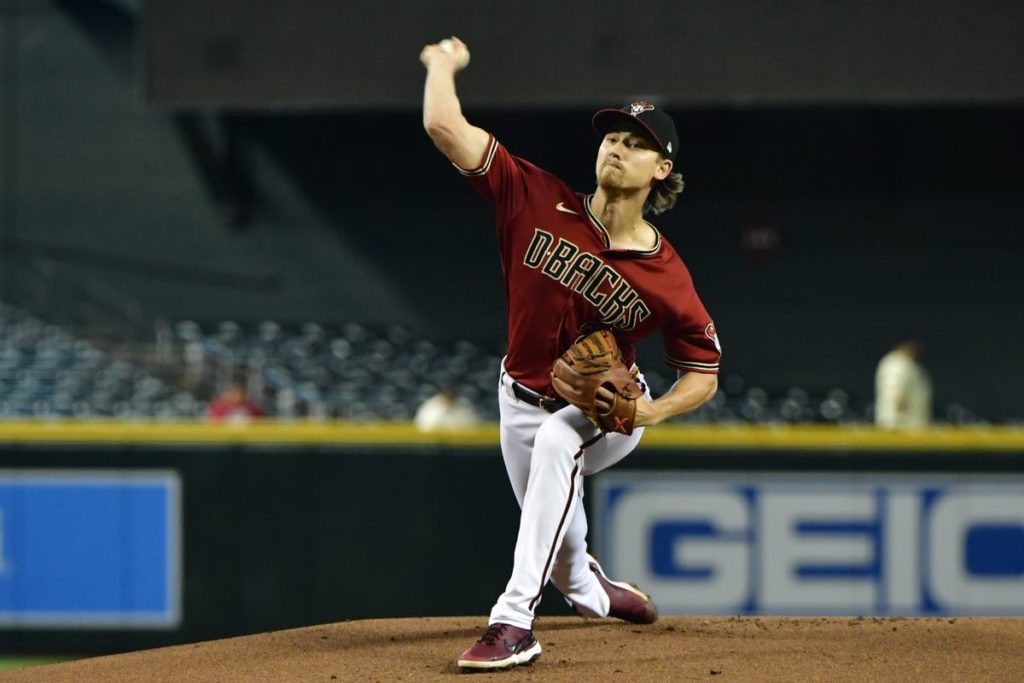PHOENIX – During the upcoming off-season, the Arizona Diamondbacks must address critical components of its on-field production. Similarly, the same can be said for the coaching staff. To revitalize an underachieving franchise and bridge development between the minor leagues and the major league level, the organization, in the coming months, will likely undergo a dramatic transformation.
After a disastrous 52-110 season, all but three coaches at the major league level were dismissed and, at the core, the organization must find a pitching coach and hitting coach capable to transition throughout a proscribed system.
While general manager Mike Hazen works the phones and follows player transactions, field manager Torey Lovullo will attempt to surround himself with a coaching staff to teach and instruct. That’s because the Diamondbacks will restructure with a younger core of players. During the current off-season, the future in Arizona of veterans like Kole Calhoun, David Peralta, Christian Walker, and Nick Ahmed may have little value in the overall outlook.
“Younger players will have an opportunity to earn jobs,” Hazen said just after the recent season concluded. “There will be very few free agents. Look, making up over 30 games from last season will be challenging and we need to get players to produce.”
Among those players who could be on their way out is Calhoun, who experienced an oft-injured season in 2021, appeared in only 51 games, hit. .235 and banged out but 13 extra-base hits in 166 plate appearances. For 2022, and should a contract be offered, Calhoun could earn $9 million. If not, he has a $2 million buy-out. Peralta, who hit .259 last season with eight homers and knocked in 63 runs, is slated to earn $7.5 million in 2021 and becomes a free agent in 2023. Peralta could be moved through the trade route. Both Calhoun and Peralta are 34-years-old and prospects like outfielder Alex Thomas, the Diamondbacks minor league position player-of-the-year, are waiting in the wings.
Regarding pitchers, decisions must be made. Reliever Tyler Clippard, who has a one-half million buyout and starter Merrill Kelly, with no buyout, could not be offered contracts.
A future in the desert concerning right-hander Luke Weaver, who came over from the Cardinals in the Paul Goldschmidt trade, remains uncertain. Weaver finished the 2021 season with a 3-6 record and 4.25 ERA in 13 starts. In three seasons with Arizona, the 27-year-old Weaver is 8-18 and a 4.45 ERA in 37 starts. In the process, the native of De Land, Fla. missed most of the 2021 season with a right shoulder strain and missed most of the 2019 season with forearm and UCL injuries. At this point, Hazen needs to determine the value of Weaver and balance any potential productivity with a history of injuries.
Perhaps the biggest concern is the lack of a bullpen. Coming into the off-season, the Diamondbacks have no bonafide middle relievers, set-up relievers nor closer. Working from scratch, Hazen will have to be creative in his search for qualified relievers and told reporters at the end of this past season that he recognizes the team will not highly competitive immediately.
In the same NL West Division with free-spending teams like the Giants, Padres, Dodgers, and Giants, Hazen discounts the notion Arizona will slug it out toe-to-toe, financially, with these clubs. The 2021 payroll for the Dodgers was a reported $256.8 million, for the Giants, $149.2, for the San Diego Padres, $121.7 million, and the Diamondbacks were reported at $77.6 million.
“We will not change,” Hazen said. “This is our choice. Payroll is not the only way mechanism to win. That’s really an excuse for me.”
If Hazen is forced to rebuild from within, there are a few options. He could start with infielder/outfielder Pavin Smith, infielder Seth Beer, outfielder Jake McCarthy, and prospects Thomas and pitcher Ryne Nelson, the organization’s minor league pitcher-of-the-year.
Usually tight-lipped about naming names, Hazen did tell reporters the organization’s future could center around infielder/outfielder Josh Rojas, who told Lovullo during the season he had no preference for playing in the infield or in the gardens.
For now, this is the time to collect and analyze information and crunch numbers. Hazen and Lovullo are very much dominated by analytics and do not wander terribly far from spreadsheets.
Diamondbacks seek to rebuild from within

